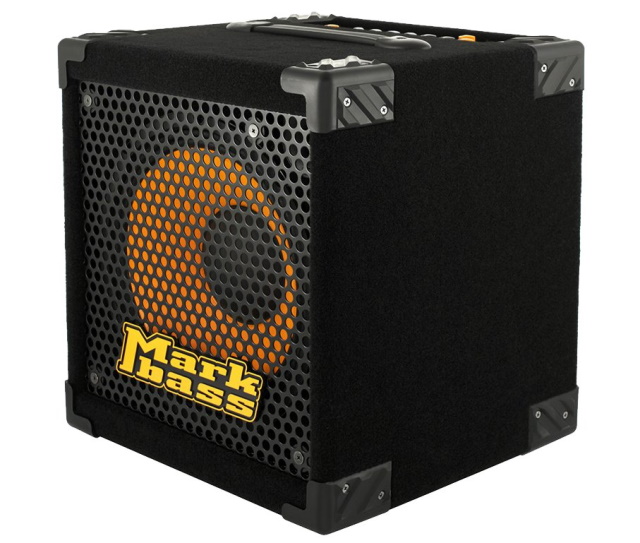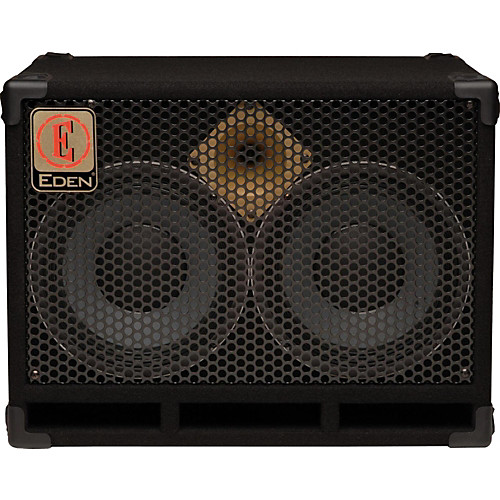Boutique or assembly-line, big or small, modest or majestic – any amp that is categorized as a “bass amplifier,” should universally work for any 5-string bass, right?
Well, not exactly. If you’re primarily a five-string bass user, you need to take some extra care and consideration in choosing the bass rig that will help you sound your best.
When the extended range of 5 or 6 string basses comes into play, there is the risk of your bass cabinet ‘bottoming out’ because we’ve dropped from the Low E to a Low B. Amps under 200W generally struggle (due to the lower wattage) with the low-B.
This can result in a muddy and unclear tone. Some amps just can’t get the Low-B to sound good even when you crank them up all the way.
Nowadays, however, 5+ strings on a bass guitar are no longer considered a rarity. It is prevalent enough to prompt all modern bass amp and cab builders to make units that can project the low-B without any issues. Some, however, are still horrible at it, and some are better than the rest.
In determining the right amp for a 5 string bass, you need to consider how good the cab is at handling the low B frequency, but also at reproducing it.
Your bass will sound pleasant enough on any cab that can handle the low-B frequency. However, the ideal rig will be a thoughtful combination of a bass amp head that can handle the ‘hard-to-amplify’ uber-low frequencies and a speaker (cabinet) that can produce the overtones.
See also:
Best compressor for 5-string bass
Best 5-string bass for small hands
Table of Contents
What to look for in good amp rig for a 5-string bass
Did you know that an amp requires 4x more power to produce a note one octave down at the same volume? The rule of thumb for gigging amplification is that the bass should have 3x the power output of the guitars.
Bass frequencies are harder to amplify, so you need more firepower than you would for a guitar. You should consider something that can pack at least 200 watts for a 4-string, and for a 5-ver you’d want 300+ watts if you can afford it.
Today, a majority of the bassists use solid state amps to get this power. Compared to an equivalent tube amp head, this is going to be a LOT cheaper. Ensure that you get an amp rated in RMS power, instead of “peak” when you look at the specs.
You don’t needa bass cab with a low-end response starting at 30Hz because most of the sound is in the 80-120Hz region. In fact, you won’t find many cabinet that reproduce the fundamental of the low B (31Hz), or even a four-string bass tuned down a full step (i.e. the low D).
Almost all amps have a roll off at 40-50hz and what we consider to be the low B sound is primarily the overtones. The human brain extrapolates the contextual clues provided by these overtones to invent the rest of the note.
Here are some important things to look at when deciding on a rig for a 5-string bass guitar are:
Bass head EQ
Choose an amp with an EQ that allows you an adequate degree of fine-tuning in the low range. Visually, the EQ panels on many amps look similar. However, while they serve the same function, you will find that bass, mid and treble are centered on different frequency points based on the make and model of an amp.
A bass amp with inadequate EQ capabilities won’t allow you to dial in deep lows beyond a point. You need these frequencies to help your 5-string bass sing. You need to check the manual or spec sheet to find the frequency points the knobs are centered to. Most amps will not list these specs on the EQ panel or packaging.
Total wattage for clean headroom
Your amp needs more power to amplify lower frequencies. Settle for a rig that has surplus power. The additional power can let the low B do its thing without the need to drive (push) the amp and cab.
In the absence of PA support, you will need an amp with surplus wattage paired with a powerful cab that can handle anything the head can throw at it.
Now that we’ve made the case for ‘5-string-friendly” amps, let us look at some viable and popular options.
Frequency response
The low B comes in at approximately 31 Hz, so you would want a cabinet that can truly dole out low notes with some power to spare.
Best combo bass amps for 5 string

Warwick BC20
This little beauty is a worthy recommendation for home use and practice. It is a responsive and well-designed unit with a 2″ tweeter and 1 x 8″ speaker in a bass-reflex housing. The amp does a great job at handling the lows and the HF horn gives it a wide and transparent tonality.
The BC40 (10″ speaker, 40W) is also a viable option if you want a bigger unit. Neither of them, however, may be sufficient for rehearsals and gigs with a full band. Check out this video by Andy Irvine playing a 5 string bass through the two units:
Markbass CMD102P
This front-ported 2×10 combo is worthy and versatile enough for small-to-medium venues. It has an angled cab and it can be stacked with any 8 ohm MB Traveler or Standard cab. You can add the 102HF for more volume and headroom for larger gigs, or you could slave another head with added cabs in extreme situations.
The important tech-specs are the 400W RMS, piezo tweeter, 101 dB SPL, and 40Hz – 18kHz frequency response. This unit can reproduce a reasonably good low-B for the price.
MarkBass CMD121P
The CMD121 is a 500W rig with a 1×12” speaker and piezo tweeter. The solid-state preamp and 45Hz to 18kHz frequency response make it adept at handling the low-B in 5 string bass guitars. It feels sufficient for most medium-sized venues and can handle small-to-medium rooms without the PA.
In some ways, it is a hybrid between a combo and an amp/cab setup. You can use it whole or remove the head to add a cab or remove the cab and add a head. When headroom beckons for your 5er, you can always add an NY102 or a 121 to get the job done.
Ampeg PF500 + Portaflex cabs
The Portaflex series is one of the best all-round options if you want a small rig with a tried and tested sound. The PF500 is sufficient for most applications and it can be paired with any Portaflex cab. You can select a ported 4×10, sealed 2×10, or the sealed 115.
The PF115 is great for the lows but the sealed 115 and 210 cabs have all the requisite lows for most 5-string basses. It is difficult to find a cab that is loud + small + has rich subs.
In most cases, you can pick any two of the above three cab options. However, the PF combo can get very loud and low with a 410 or by stacking two smaller cabs.
GK MB212 II
The GKs have always been a good choice for players who primarily use a 5-string bass. The MB212 is a 500W class-D amp with 2 x 12” speakers and a tweeter. It is lightweight, versatile, and has plenty of oomph for all styles and genres of music.
You can toggle the tweeter on and off based on the application and you can even turn off the GK mid-scoop as well, for a flatter EQ response. It can confidently handle the low B but is equally great at other drop tunings like C, B, and A. You can see it demo’d through an MTD 5’ver in this video:
Best head & cab for 5-string bass
Truth be told, when it comes to 5-string bass amplification, most combo amps are inherently limited. Unless you have good reasons, you should generally consider a head and cab instead. You will find a lot more options and the added flexibility of customizing your rig by shifting a head and replacing/borrowing a cab.
Back in the days, 5-strings were a rarity so the older 4×10 cabs weren’t designed to accommodate the low-B frequency response because there simply was the need for this. Most players would have to venture into 15” territory to avoid the infamous “shake, rattle and roll”.
Today, every manufacturer has acknowledged the additional needs of 5+ string bassists. The modern designs of amps and cabs, especially high quality units, have evolved in specs and design to accommodate these requirements.
Aguilar Tone Hammer 500 + GS12
The TH500 is featured in many of our bass gear recommendations. It’s a great rig for anyone who wants to keep it light regardless of string count. Five-string players, in particular, can greatly benefit from pairing it with a 4 ohm Aguilar GS 212.
Mesa Subway D800

The D800 is a lightweight bass amp head with a cult following, and for good reason. The Subway 12 and 15 cabs are equally impressive. Just the 12” speaker is sufficient to handle the richest low-B from a boutique bass. That’s a feat that very few 12” speakers can boast of.
Alternatively, you can experiment with some Carvin cabinets which pair rather well with the D800 head. The BRX10.2NEO cabs are a good place to start.
Mesa Walkabout Scout 15″ + 15″ extension cab
The WA/Scout cabs combo has remained popular among 5 string players in the 15” or 12″ version(s). The 15” cab will get more volume out of the amp than the 12”. The WA is not designed to run less than 4 Ohms load but you can milk the unit by removing the head from the combo and running the amp with more 2×12, 2×15 drivers.
The amp pairs well with the Bergantino CN212 as well.
Genz Benz Shuttle 3.0-10T + 110 extension cab
At 2.75 lbs, the ultra-portable Shuttle 3.0 is great at delivering 300W at 4 ohms in a combo version. The extension cabinet is a ported design with a 10” neodymium speaker and tweeter with a bottom-mounted kickstand.
They aren’t ‘earth-shattering’ loud or super powerful, but they sound pristine and refined. This combination is a good choice for 5-string bass players who want a mellow or sophisticated amp+cab for jazz trios/quartets in fairly large rooms.
Acme Low B1 and Low B2 (and B4)
The B1 and B2 can do the requisite job of delivering a reasonably good open B string sound on a 5ver with the amp EQ set to flat. They are great cabs but they aren’t meant to be very loud.
You can find a used unit for cheap and pair the cab with a wide variety of heads without any issues. For instance – a used B1 cab with Markbass LMII or III amp head would be a stellar compact rig that can handle the low-B well.
Cabinet Recommendations for 5 string bass guitar
As mentioned, a good bass cab is one of the key elements of a rig for the best B string sounds. The rule of thumb is to opt for smaller speakers and more of them – like multiple 10s or 12s. You can always stack more cabs if you want to get louder as the need arises.
The classics like Ampeg, Eden, Mesa, and GK are tried and tested for 5-string bass. Barefaced, Bergantino, and Epifani are relatively new but equally capable of the task.
In general, you should get a cab that has more power than the watts you are putting in by way of the amp. This will give you headroom and keep things clean at high volumes.
The following are some popular options for bass cabinets among 5-string bass players.
Eden 2×10 XST

The 2×10 XST is hailed for its relatively flat response and exemplary ability to handle the low end. It is open sounding in the upper mids with smooth lows that are rich and deep.
The sound can hold up to high volumes and the cab delivers an impressive performance with passive or active 5-string bass guitars.
The XST is reminiscent of the Epifani 310, which is also worth checking out.
Ampeg 410HLF
Ampeg had nailed the equation with the (now discontinued) PR410-HLF. Luckily, the SVT 410HLF delivers low-end all the way down to 28Hz and handles 5-string basses equally well.
The 410 is a 4 ohm cab that can go LOW, in part due to the 10” speakers that move a lot of air. It has been used by Meshell Ndegeocello, John McVie (Fleetwood Mac), Mark Fain, and many others.
Ampeg 2×10
If you want something light and small, the Ampeg 2×10 cabs like the SVT 210AV can be a worthy option for a 5-er. They cost $300 and can be stacked and are quite popular among bands that perform at small and medium venues.

